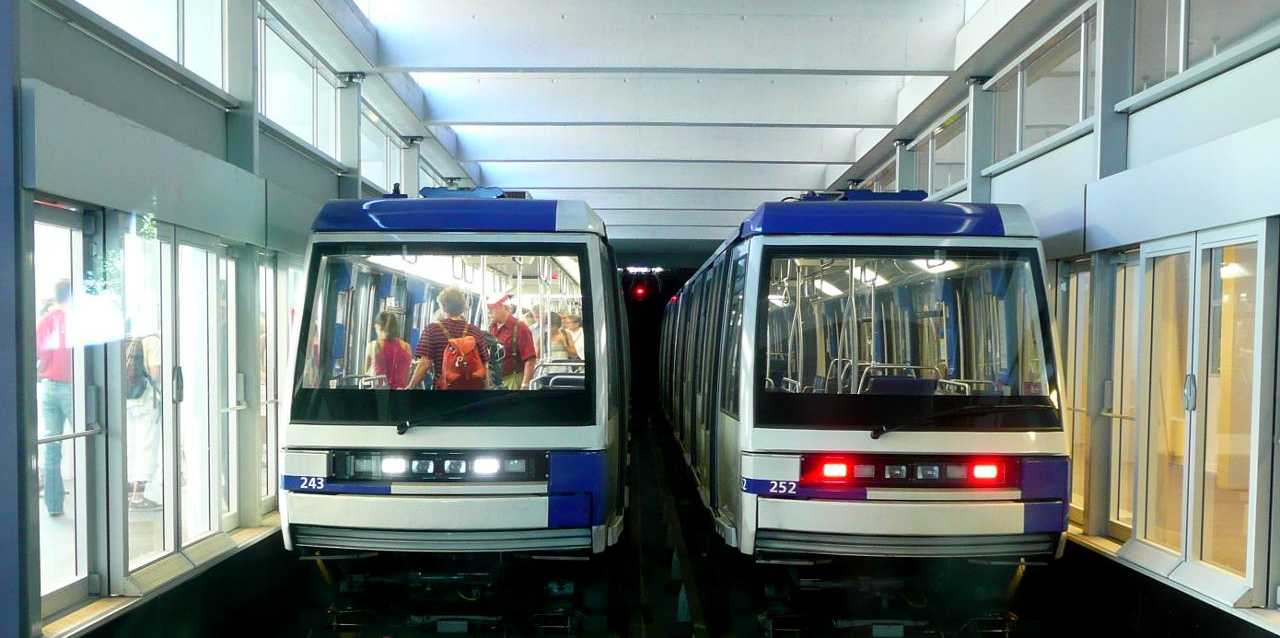M2
Analysis of pedestrian flows in the central hall of M2 Métro station Lausanne-Flon
Project details
Duration
04.2016-06.2016
Sponsor
Transports publics de la région lausannoise
Staff
Prof. Dr. U. Weidmann, E. Bosina and M. Meeder
Summary
On working days around 38‘000 pedestrians (metro passengers and other visitors) pass through the central hall of the Flon métro station in Lausanne. On Saturdays, this number lies around 36’000. Now, a new commercial area is planned in the station. Among the new objects is a vendor stand in the central hall. The aim of this study was to research the influence of this stand on the pedestrian flows in the hall, and whether it might prohibit a timely evacuation in the case of an emergency. Of specific interest is the question whether the different pedestrian flows would be inhibited because of a reduction in available walking space (both caused by the stand itself and queues waiting to be served). Furthermore, a before-after comparison of the pedestrian Level-of-Service was carried out.
The planned situation was evaluated in terms of quality and capacity for pedestrians. This was done using a micro simulation tool for pedestrian transport. Based on data provided by the customer different scenarios for the expected demand were developed and implemented in the model. In addition to the simulation, analytical calculations were made to further study the potential conflicts and bottlenecks in the new station layout. As part of the results of the micro simulation, the passenger flows were visualised for a better understanding of the situation during peak hours. Bottlenecks and potential conflict areas were identified and recommendations were given with respect to passenger flows in the central hall in case of an emergency evacuation.
It was concluded that the planned vending stand does not interfere with the passenger flow inside the station hall in a way that it will reduce to LOS to an unacceptable level. For emergency situations the location of the new vending stand was indeed found to be a potential cause for concern. However, considering the total width available in the station hall and the projected passenger numbers, the expected impact on the passenger flow during evacuation was deemed to be acceptable.
